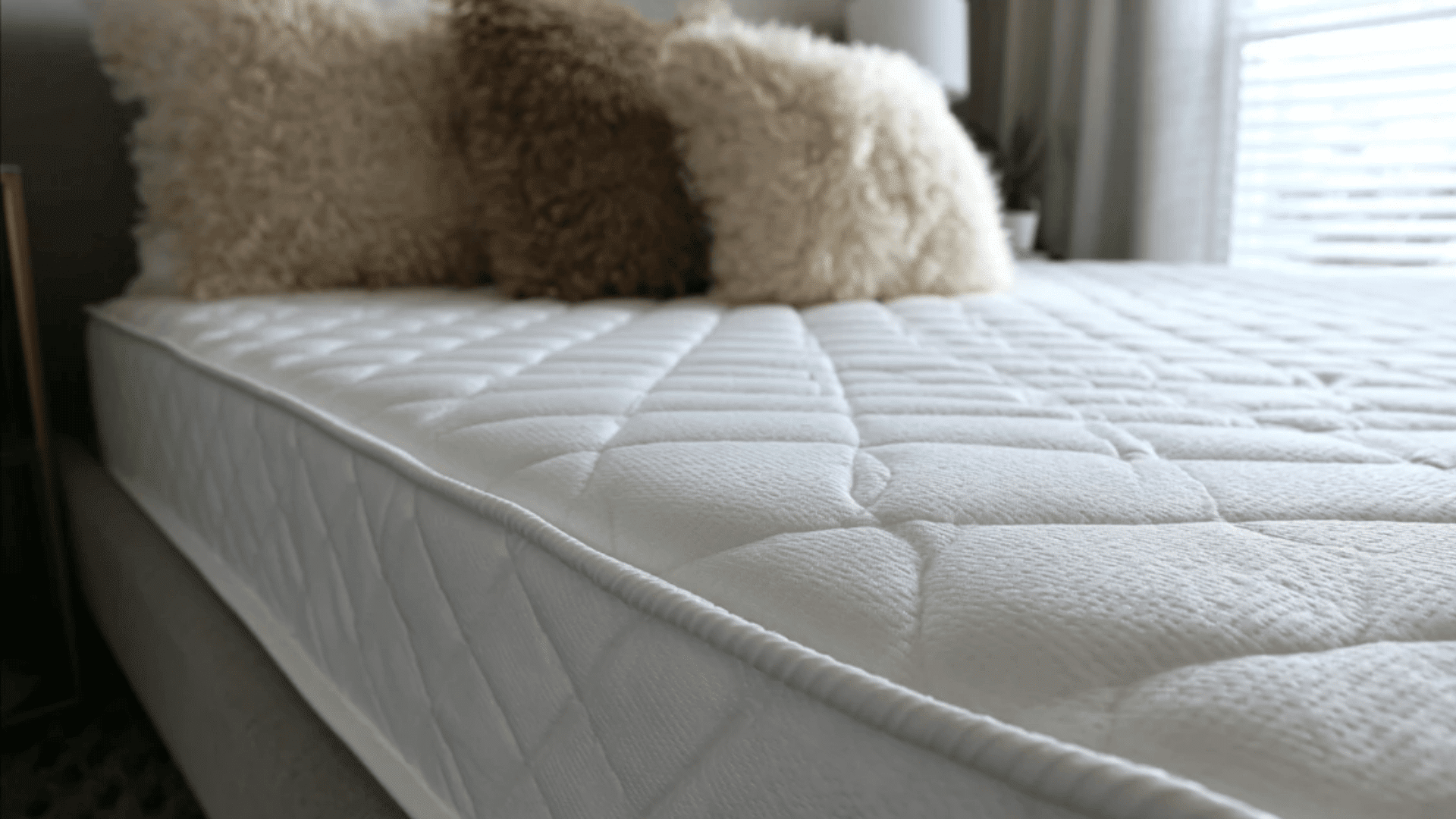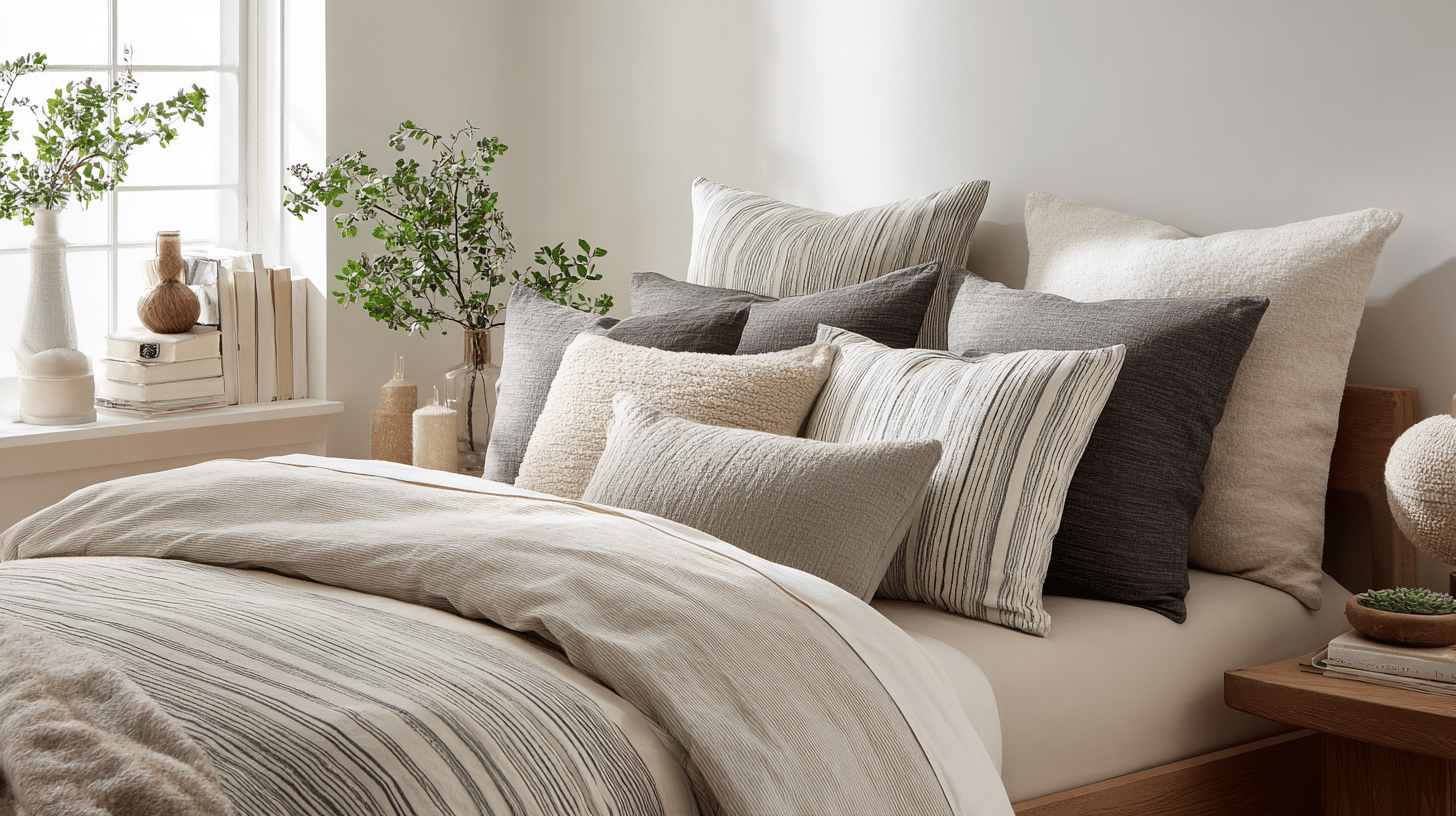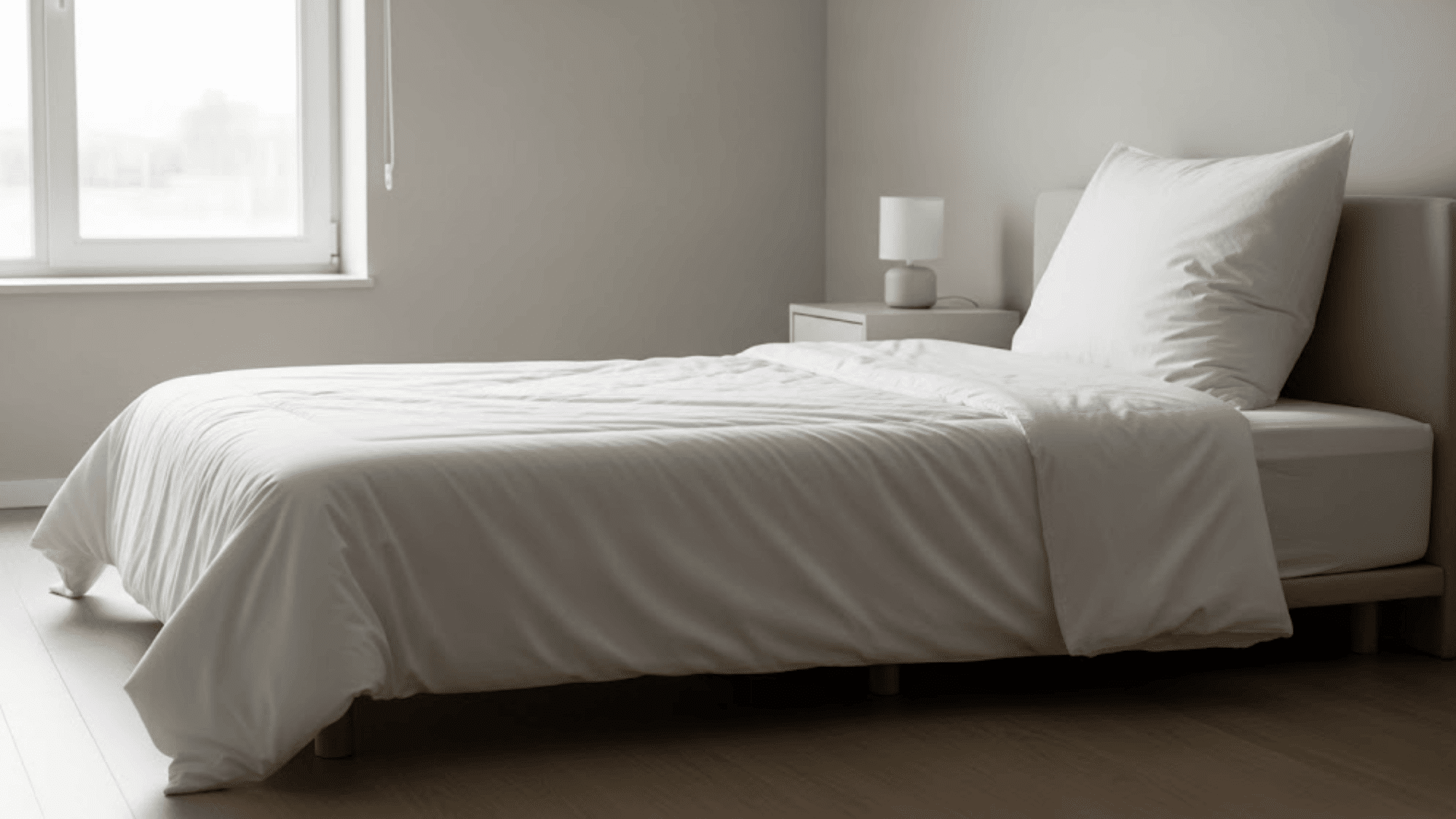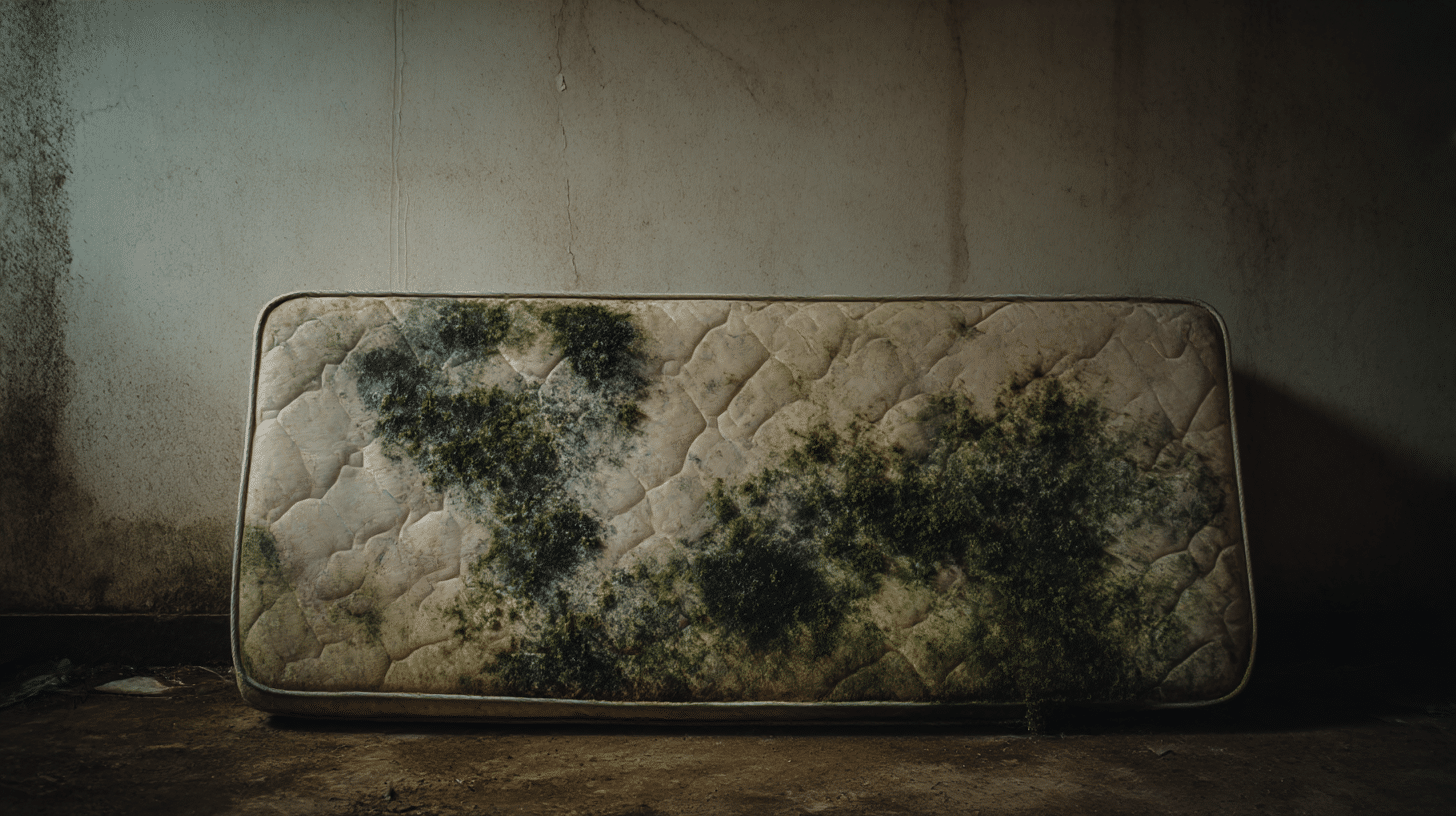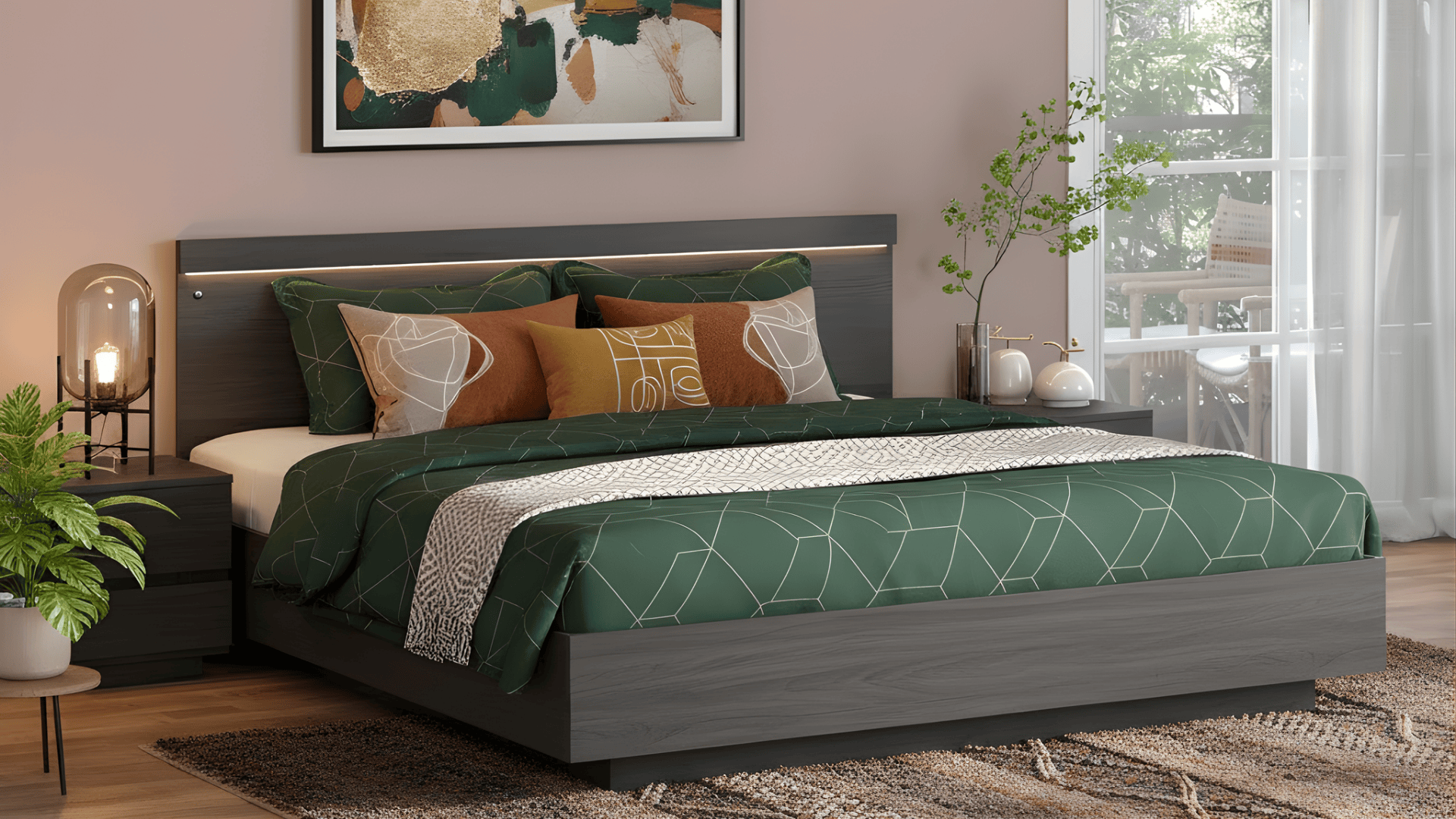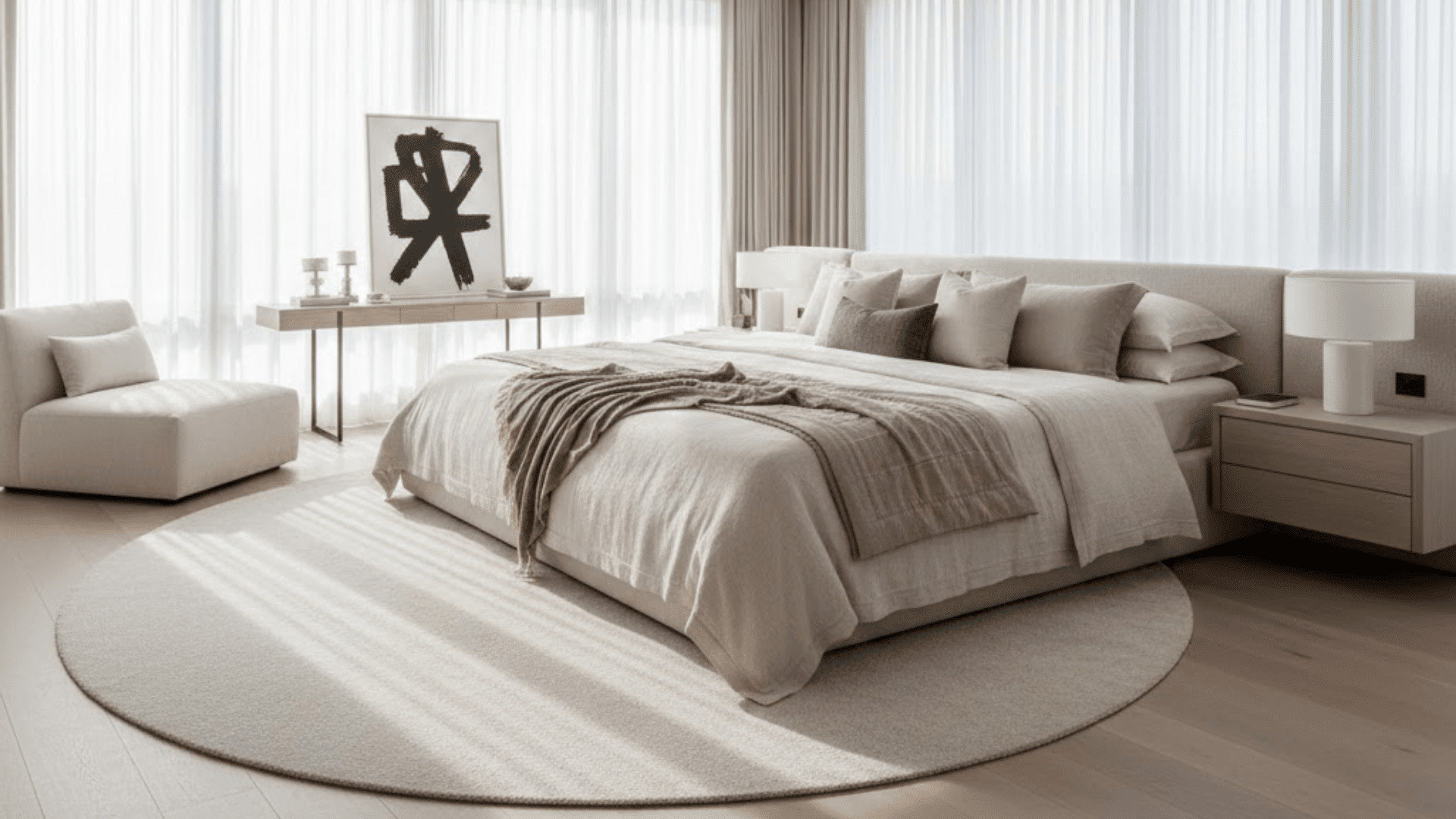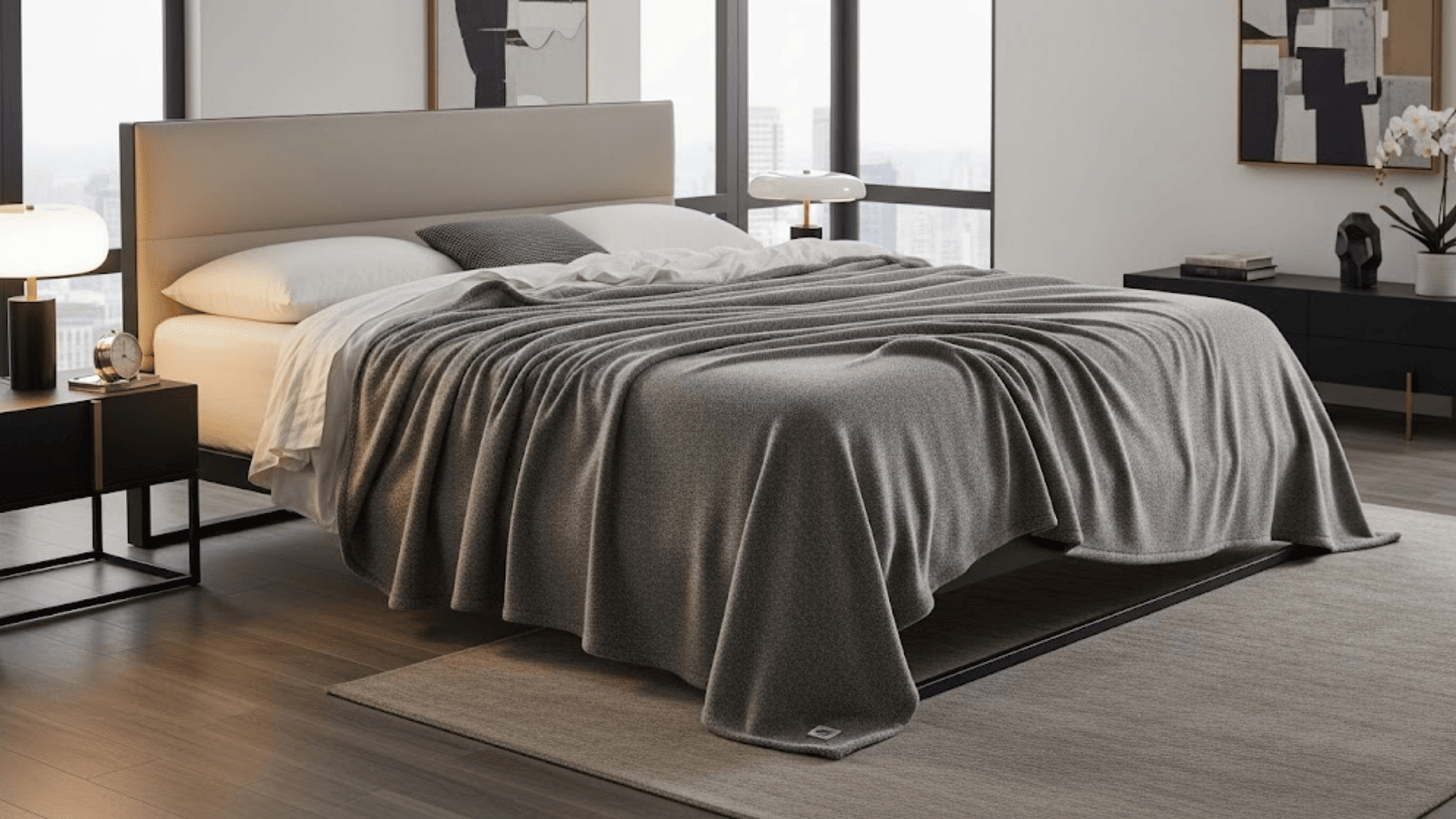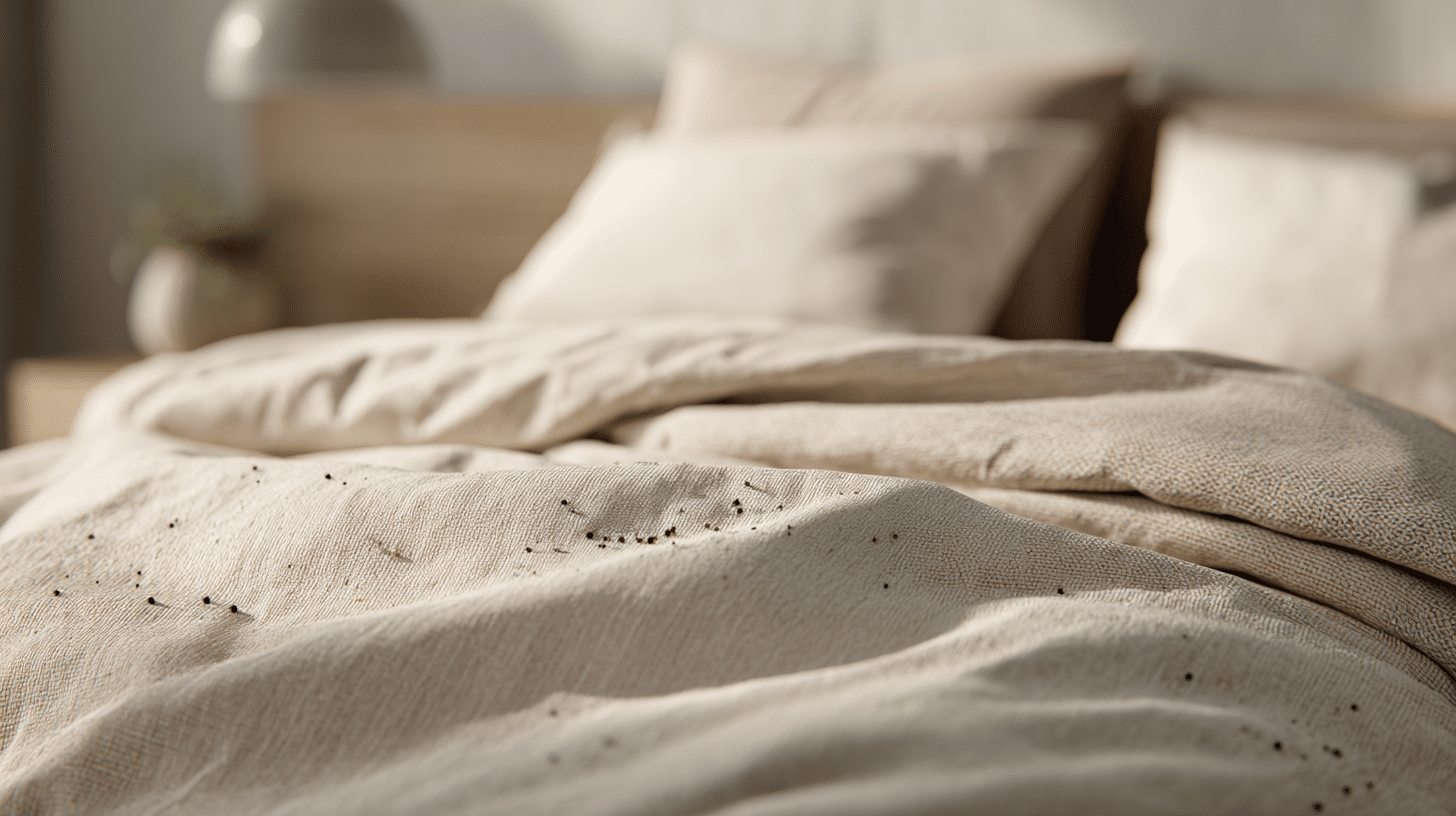Choosing the right foundation for your mattress is just as important as picking the mattress itself.
The wrong support can ruin your sleep quality, damage your mattress, and even void your warranty. Many people wonder if they can use their existing box spring with a new memory foam mattress.
Here’s the short answer: Traditional box springs and memory foam mattresses don’t usually work well together.
Memory foam needs firm, even support that most box springs can’t provide.
This blog will explain why this matters, when it might work, and what better options you have for supporting your memory foam mattress.
Understanding Memory Foam Mattresses
Memory foam is a dense material that softens and molds to your body when it gets warm from your body heat.
This contouring effect relieves pressure points and helps keep your spine aligned while you sleep. The foam was first developed by NASA and later adapted for mattresses.
Memory foam mattresses need firm, flat, and uniform support to work properly. Without the right foundation, they can sag, develop soft spots, or wear out much faster than they should.
This is very different from traditional innerspring mattresses, which were designed to work with bouncy box springs.
The key difference is that memory foam needs to maintain its shape and support from underneath. If the foundation gives way or has gaps, the mattress won’t perform as designed.
Types of Memory Foam Mattresses


Different types of memory foam mattresses have varying characteristics but similar support needs:
1. Traditional Memory Foam
This is the original memory foam that responds slowly to body heat and pressure. It creates a deep body impression that cradles your shape closely.
The dense material takes time to bounce back when you move or get up.
Traditional memory foam provides excellent pressure relief but can retain heat. It needs very firm, solid support to prevent excessive sinking that could create permanent indentations.
2. Gel-Infused Memory Foam
This type contains cooling gel particles mixed into the foam to help regulate temperature. The gel beads absorb and disperse body heat more effectively than traditional foam.
It feels cooler to sleep on while still providing the same contouring benefits.
Gel-infused foam requires the same firm foundation support as traditional memory foam. The added gel particles can make these mattresses slightly heavier than standard memory foam options.
3. Plant-Based Memory Foam
Made with natural plant oils instead of petroleum-based chemicals, this eco-friendly option is more responsive than traditional foam.
Plant-based memory foam still needs solid, even foundation support, just like other memory foam types.
While more responsive, it can still develop problem areas if placed on uneven or flexible surfaces.
Note: Regardless of the memory foam type you choose, all require the same foundation characteristics: firm, flat, and uniform support without gaps or flexibility.
What Is a Box Spring?
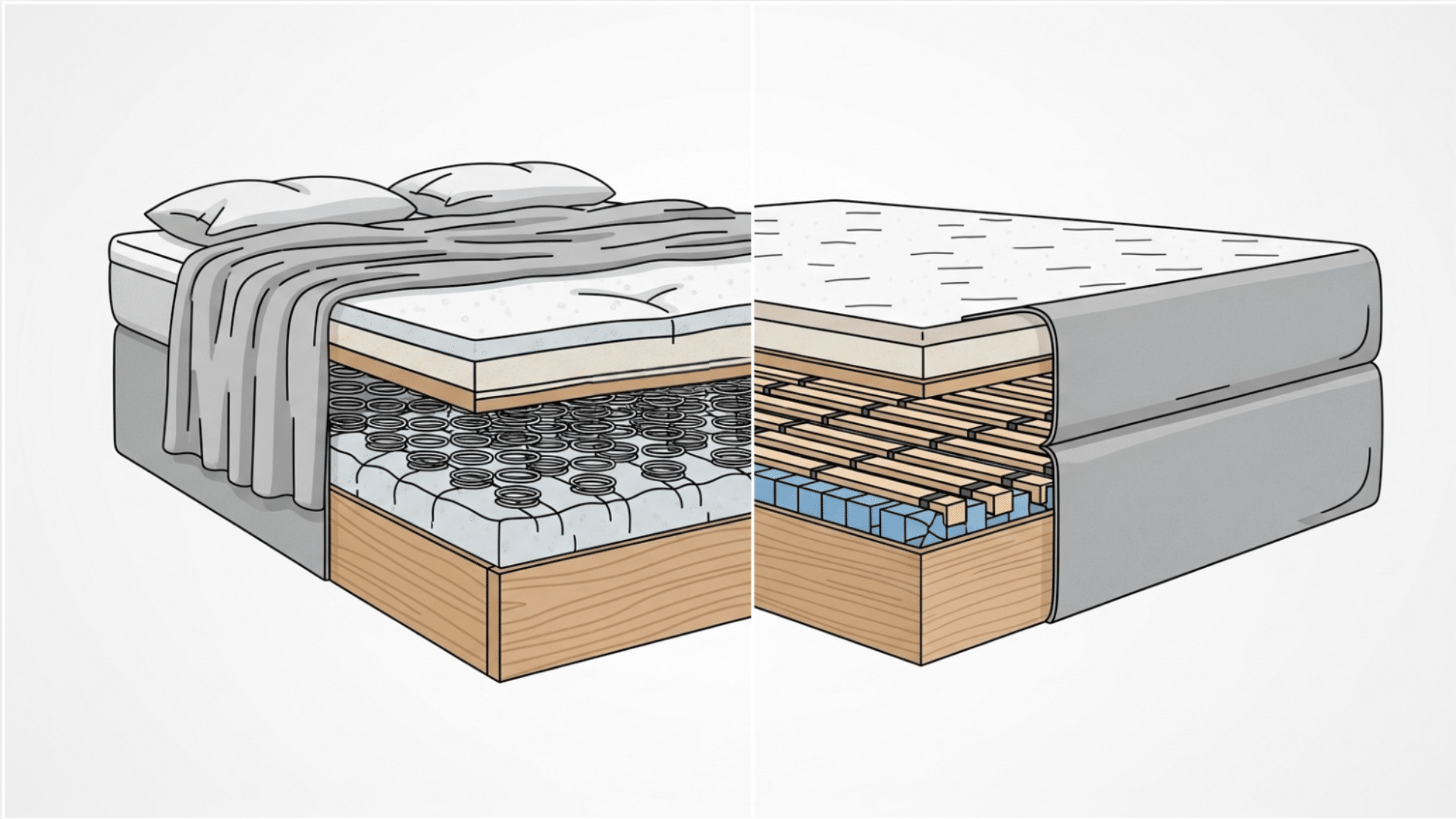

A box spring is a wooden frame filled with metal springs or rods, then covered with fabric. The original purpose was to absorb impact and add bounce for innerspring mattresses.
Traditional box springs have coil springs inside that compress when you move on the bed.
Key characteristics of box springs include:
|
Modern versions sometimes use rigid slats instead of springs, but they still lift your mattress and can improve airflow underneath.
However, traditional box springs with flexible springs create an uneven, bouncy surface. This flexibility that worked great for old innerspring mattresses can be a problem for memory foam.
Compatibility of Memory Foam Mattresses with Box Springs
The short answer: Most memory foam mattresses should NOT be used with traditional box springs. The spaces between springs and flexible coils create uneven support that damages your mattress over time.
1. Problems with Traditional Box Springs
Sagging and permanent damage: Memory foam can sag into gaps between springs, creating permanent dents and uncomfortable valleys that affect sleep quality.
Uneven wear patterns: Some areas of your mattress get more stress than others, leading to premature breakdown and a shorter lifespan.
Voided warranties: Many manufacturers void warranties when memory foam is used on traditional box springs, leaving you without protection for your investment. This means you’ll have to replace your mattress sooner and pay for it yourself.
2. When Box Springs Can Work
There are some exceptions to this rule. Newer rigid box springs with these features can work:
|
These modern versions act more like platform beds, providing the firm, even support that memory foam mattresses require to maintain their shape and performance over the years of use.
Potential Benefits of Using a Box Spring with Memory Foam
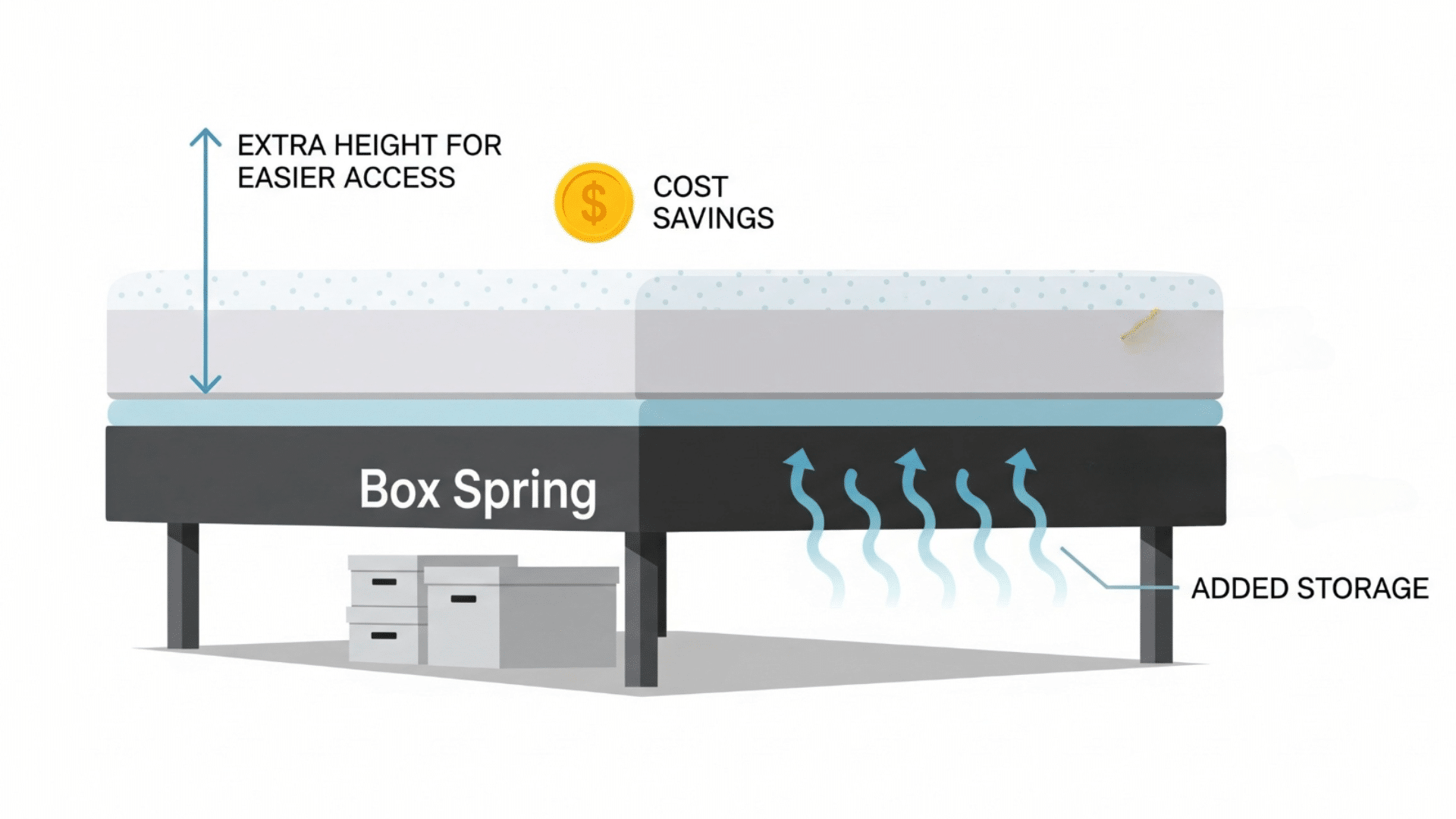

If you have a rigid box spring that meets the support requirements, there are some benefits:
- Extra height: Makes getting in and out of bed easier, especially for people with mobility issues or joint problems.
- Cost savings: If your current box spring is rigid and supportive, you might not need to buy new furniture right away.
- Better airflow: The space under the box spring helps air circulate around your mattress, keeping it cooler and reducing moisture buildup.
- Visual compatibility: Works with existing bedroom furniture and bed frames that were designed for box spring use.
- Storage space: The raised height creates an additional under-bed storage area for boxes, seasonal items, or cleaning supplies.
Remember, these benefits only apply if your box spring provides firm, even support without gaps or flexibility.
Alternatives to Box Springs for Memory Foam Mattresses
Here are better foundation options for your memory foam mattress:
| Foundation Type | Pros | Cons | Best For |
|---|---|---|---|
| Platform Bed | Solid, even support; no assembly needed | Less airflow, fixed height | Most memory foam mattresses |
| Slatted Frame | Good airflow, often adjustable | Slats must be close together | Those wanting ventilation |
| Adjustable Base | Customizable positions; great for health issues | More expensive, electrical components | People with back pain or sleep issues |
| Mattress Foundation | Designed specifically for foam, firm support | Less attractive, basic design | Budget-conscious buyers |
Expert Opinions & Consumer Experiences
Sleep experts consistently recommend firm, flat surfaces for memory foam mattresses.
The Sleep Foundation and most major mattress manufacturers advise against using traditional box springs with memory foam.
Consumer reviews often mention problems when people try to use old box springs with new memory foam mattresses.
Common complaints include sagging, uneven wear, and comfort issues within the first year.
However, some people have success with newer, rigid box springs that don’t have flexible coils. The key is making sure the support is firm and even across the entire surface.
Tips to Protect Your Memory Foam Mattress
Follow these guidelines to keep your memory foam mattress in great shape:
- Check warranty requirements: Always read your mattress warranty to see what foundations are approved. Using the wrong base can void your coverage.
- Avoid flexible supports: Stay away from box springs with coils, wide slat gaps, or any foundation that bends under weight.
- Use a mattress protector: This guards against spills, dust mites, and normal wear while maintaining airflow.
- Inspect regularly: Check your foundation for sagging, broken slats, or other damage that could affect support.
- Follow weight limits: Make sure your foundation can handle the combined weight of the mattress and sleepers.
Conclusion
Traditional box springs are generally not the right choice for memory foam mattresses because of their flexibility and uneven support.
Memory foam performs best on firm, flat surfaces that maintain the mattress structure and prevent sagging or premature wear.
Your best options are platform beds, rigid foundations designed for foam mattresses, or adjustable bases.
The right support system will help your memory foam mattress last longer, stay comfortable, and give you the best sleep possible.
Make sure you check the compatibility before making the decision. Comment below whether the box spring works for your mattress!
Frequently Asked Questions (FAQs)
Can I Put a Memory Foam Mattress on An Old Box Spring?
Generally, no, unless it’s a rigid box spring with no flexible springs and slats less than 3 inches apart. Most old box springs have coils that create uneven support and can damage your mattress.
Does Using a Box Spring Void My Mattress Warranty?
It depends on your specific warranty terms. Many memory foam mattress manufacturers specifically exclude traditional box springs from approved foundations.
What Is the Best Base for A Memory Foam Mattress?
A platform bed or rigid foundation with solid, even support works best. Slatted frames can work if the slats are close together and don’t flex. The key is firm, uniform support across the entire mattress.


